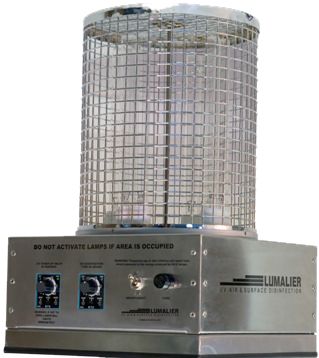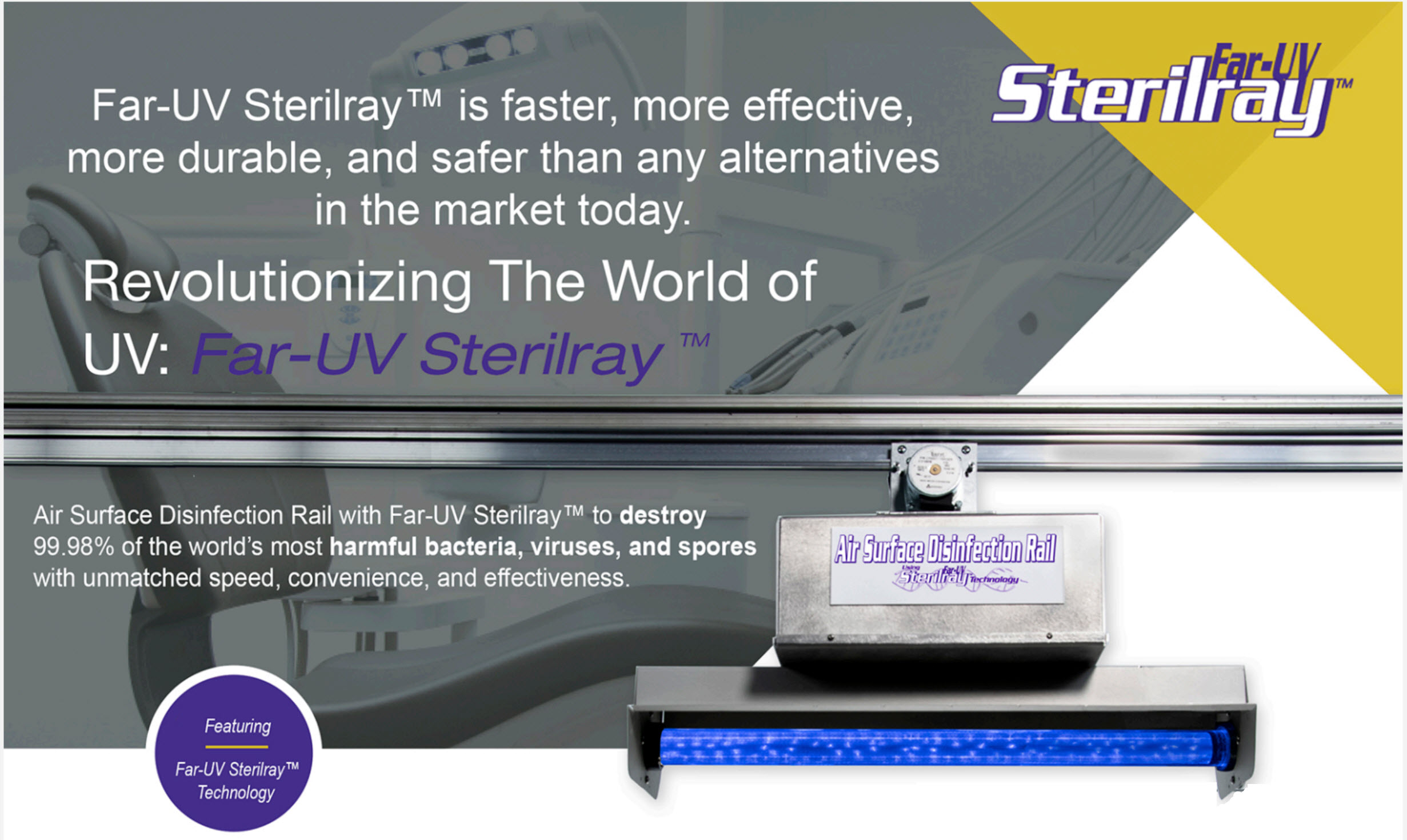UV Sanitation: The Cutting-Edge Innovation Transforming Cleanliness Practices
In the world of sanitation practices, one modern technology has emerged as a game-changer: UV disinfection. From healthcare setups to food handling, UV disinfection is making its mark in various sectors.
Exactly How UV Sanitation Functions
UV disinfection functions by utilizing ultraviolet light to damage or suspend bacteria, supplying a chemical-free and extremely effective method of hygiene. This innovation harnesses the power of short-wavelength UV-C light, which is qualified of harming the DNA and RNA of microorganisms, hence rendering them unable to create and reproduce damage.
The procedure begins with the installment of UV disinfection systems, which include UV lamps that emit UV-C light. These lamps are tactically positioned in areas where microbial contamination is an issue, such as water treatment plants, hospitals, research laboratories, and food processing centers.
When microbes are subjected to UV-C light, the photons penetrate their cell walls and get to the DNA and RNA inside. The high-energy UV-C photons interrupt the genetic material by creating bonds between nearby nucleotides, leading to the formation of thymine dimers. These dimers protect against the microorganisms from reproducing, providing them safe.
UV disinfection is extremely reliable versus a broad array of microorganisms, including bloodsuckers, microorganisms, and infections. It is particularly effective against waterborne microorganisms like E. coli, Giardia, and Cryptosporidium. UV sanitation is a chemical-free technique, getting rid of the requirement for potentially hazardous disinfectants and lowering the threat of hazardous sanitation byproducts.
Advantages of UV Disinfection
UV disinfection provides various advantages in the area of hygiene, making it an extremely liked approach for effectively eliminating harmful microorganisms. One of the crucial benefits of UV disinfection is its capacity to offer a chemical-free service. Unlike traditional sanitation approaches that rely upon chemicals, UV disinfection uses ultraviolet light to destroy the DNA of microbes, providing them not able to recreate and create infections. This not just eliminates the demand for possibly damaging chemicals yet also decreases the danger of chemical residue on surfaces.

UV sanitation is likewise extremely flexible in its applications. It can be utilized in different setups, including healthcare facilities, colleges, food handling facilities, and water treatment plants. UV disinfection systems can be easily integrated into existing sanitation practices, offering an additional layer of defense versus transmittable conditions.
In addition to its efficiency and adaptability, UV disinfection is likewise eco-friendly. It does not create any damaging byproducts or residues, making it a secure and lasting technique for sanitation - uv surface disinfection. Moreover, UV disinfection requires marginal upkeep and has a lengthy life expectancy, leading to cost savings in the future.
UV Sanitation in Health Care Settings
In health care setups, UV disinfection has actually emerged as an innovative approach for efficiently eliminating unsafe bacteria. UV sanitation works by producing ultraviolet light at a details wavelength that is lethal to germs, infections, and other microbes.
Firstly, UV sanitation is a non-chemical approach, making it an eco-friendly alternative contrasted to standard disinfection techniques that usually involve the usage of harsh chemicals. Making use of UV light gets rid of the demand for chemical disinfectants, minimizing the threat of hazardous residue or chemical direct exposure to both patients and healthcare workers.
Furthermore, UV disinfection is very reliable in eliminating a large range of bacteria, consisting of drug-resistant germs such as MRSA and C. difficile. It supplies a regular and reputable disinfection process, guaranteeing that all surfaces this link and devices are completely sanitized, even in hard-to-reach areas.

UV Sanitation in Food Processing
The application of UV disinfection expands beyond healthcare setups and locates considerable value in the world of food handling. uv surface disinfection. UV disinfection technology is coming to be significantly preferred in the food market as a result of its capability to successfully eliminate harmful virus and improve food safety
One of the main advantages of UV disinfection in food handling is its capacity to target a wide variety of bacteria, consisting of viruses, germs, and mold and mildews. By utilizing UV light at details wavelengths, it is feasible to interfere with the DNA and RNA of these virus, rendering them unable to cause or reproduce harm. This technology can be related to numerous phases of the food handling chain, consisting of surface sanitation, devices sanitation, and water therapy.
UV disinfection offers a chemical-free and non-thermal technique of sanitizing food products. Unlike typical disinfection methods that count on chemicals or warmth, UV innovation does not leave any kind of residue or alter the preference, structure, or nutritional value of the food. This makes it an optimal service for industries that call for rigorous adherence to high quality standards.
In addition, UV sanitation systems are simple to operate and mount, calling for marginal upkeep. They can be integrated into existing processing lines without triggering significant disturbances to the production process. Additionally, UV systems have a fast therapy time, permitting continuous handling and decreasing downtime.
The Future of UV Sanitation

One area where UV disinfection is anticipated to make substantial developments remains in the area of healthcare. With the rise of antibiotic-resistant germs and the requirement for much more effective disinfection methods, UV light has the potential to play a crucial role in minimizing healthcare-associated infections. UV sanitation systems can be utilized to decontaminate surfaces, devices, and also the air in health care facilities, assisting to avoid the spread of harmful pathogens and enhance client safety.
An additional market that could take advantage of improvements in UV disinfection technology is the food sector. UV light has already confirmed to be a reliable method for decontaminating food products and lowering the threat of foodborne diseases. As modern technology improves, we can anticipate to see a lot more affordable and reliable UV sanitation systems being implemented in food handling plants, ensuring that the food we eat is safe and without hazardous germs.
Verdict
To conclude, UV sanitation is a cutting-edge modern technology that is transforming cleanliness methods in medical care setups and food processing. By utilizing UV light to eliminate or shut down microbes, it provides numerous benefits such as performance, efficiency, and safety. With continuous developments in this area, UV disinfection holds excellent prospective for the future of hygiene, providing a lasting and trusted remedy for preserving clean and sanitary atmospheres.
UV disinfection is a chemical-free method, getting rid of the demand for possibly hazardous disinfectants and decreasing the risk of hazardous disinfection by-products.
Unlike standard disinfection methods that count on chemicals, UV sanitation utilizes ultraviolet light to damage the DNA of bacteria, rendering them incapable Visit This Link to duplicate and cause infections. Unlike typical disinfection methods that rely on chemicals or warmth, UV modern technology does not leave any type of residue or modify the taste, structure, or nutritional value of the food. As modern technology improves, we can anticipate to see more economical and efficient UV disinfection systems being carried out in food handling plants, guaranteeing that the food we consume is secure and totally free from unsafe microorganisms.
In final thought, UV disinfection is an innovative innovation that is transforming sanitation techniques in healthcare setups and food processing.